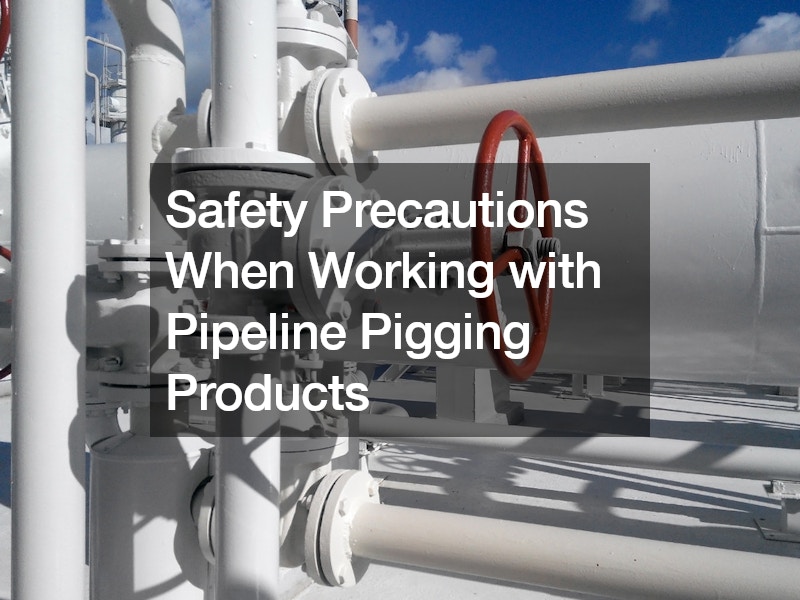Pipeline pigging products play a crucial role in the maintenance and integrity of oil and gas pipelines. These devices, also known as pigs, are used for cleaning, inspecting, and maintaining pipelines, ensuring smooth operation and preventing potential hazards. However, working with pipeline pigging products requires adherence to strict safety protocols to protect personnel, the environment, and the integrity of the infrastructure.
Understanding Pipeline Pigging Products
Pipeline pigging products, or simply pigs, come in various types designed for specific tasks in pipeline maintenance.
These tasks include internal cleaning, gauging, inspection, product separation, and blending. Pigs are cylindrical or spherical devices equipped with brushes, sensors, or other mechanisms tailored to their intended function.
Safety Precautions
Training and Certification: Before handling pipeline pigging products, personnel should undergo comprehensive training on their safe use, handling, and maintenance. Certification programs ensure that individuals are competent and knowledgeable about safety procedures and operational protocols.
Personal Protective Equipment (PPE): Workers involved in pigging operations must wear appropriate PPE, including safety goggles, gloves, hard hats, and steel-toed boots. Protective clothing helps mitigate the risk of injury from handling pigs and exposure to pipeline contents.
Risk Assessment: Conducting a thorough risk assessment before pigging operations is essential to identify potential hazards and implement appropriate control measures. Factors such as pressure, temperature, pipeline contents, and environmental conditions should be considered.
Equipment Inspection and Maintenance: Prior to use, pipeline pigging products should undergo rigorous inspection and maintenance to ensure they are in proper working condition. Any signs of damage, wear, or malfunction should be addressed promptly to prevent accidents during operation.
Safe Handling Procedures: Proper handling of pigs during launching, retrieval, and transportation is critical to prevent accidents and injuries. Employees should be trained on safe handling techniques, including securing pigs with appropriate restraints and using handling equipment such as cranes and hoists.
Emergency Preparedness: Establishing emergency response procedures is vital in the event of accidents, leaks, or spills during pigging operations. Personnel should be trained to respond quickly and effectively to mitigate risks and minimize environmental impact.
Communication: Effective communication among team members involved in pigging operations is essential to ensure coordination and safety. Clear communication channels should be established, and personnel should be aware of their roles and responsibilities.
Environmental Protection: Protecting the environment during pigging operations is paramount. Measures should be implemented to contain spills, manage waste, and minimize the release of pollutants into the environment.
Compliance with Regulations: Adhering to regulatory requirements and industry standards is non-negotiable when working with pipeline pigging products. Compliance ensures that operations are conducted safely and responsibly, reducing the risk of incidents and regulatory penalties.
Continuous Improvement: Regular review and evaluation of safety procedures and practices are essential to identify areas for improvement and implement corrective actions. Learning from past incidents and near misses helps enhance safety performance and prevent future accidents.
In addition to the fundamental safety precautions outlined above, there are several more specific measures that should be implemented when working with pipeline pigging products:
Gas Detection Systems: Installing gas detection systems along the pipeline route and at pigging stations helps monitor for the presence of hazardous gases such as hydrogen sulfide (H2S) and methane. Early detection of gas leaks allows for timely evacuation and mitigation of potential risks to personnel and the environment.
Ventilation and Confined Space Entry: When performing pigging operations in confined spaces such as pipelines or pig traps, adequate ventilation should be provided to prevent the buildup of toxic gases or vapors. Workers entering confined spaces must follow strict entry procedures and use appropriate respiratory protection as necessary.
Lockout/Tagout Procedures: Prior to performing maintenance or inspection tasks on pipeline pigging equipment, lockout/tagout procedures should be implemented to isolate energy sources and prevent accidental startup or release of stored pressure. Clear labeling and documentation of lockout/tagout procedures help ensure compliance and prevent unauthorized access to equipment.
Emergency Shutdown Systems: Installing emergency shutdown systems (ESDs) allows for rapid isolation of pipeline sections in the event of an emergency, such as a rupture or leak. ESDs should be regularly tested and maintained to ensure they function effectively when needed.
Hot Work Permits: When welding, cutting, or performing other hot work activities near pipelines or pigging equipment, a hot work permit should be obtained to assess potential fire hazards and implement appropriate safety measures. Fire watch personnel should be present to monitor for any signs of ignition and respond promptly to extinguish fires.
Environmental Monitoring: Regular environmental monitoring should be conducted to assess the impact of pigging operations on air and water quality, soil contamination, and wildlife habitats. Mitigation measures such as erosion control, spill containment, and habitat restoration may be necessary to minimize environmental impact.
Emergency Response Drills: Conducting regular emergency response drills helps ensure that personnel are prepared to effectively respond to incidents such as spills, leaks, or equipment failures during pigging operations. Mock scenarios should be realistic and cover a range of potential hazards to test the effectiveness of response plans.
Contractor Management: When outsourcing pigging operations to third-party contractors, it is essential to verify their qualifications, training, and safety record. Contractual agreements should clearly define roles, responsibilities, and safety expectations to ensure compliance with safety standards and regulatory requirements.
Conclusion
Safety is paramount when working with pipeline pigging products to ensure the well-being of personnel, protect the environment, and maintain the integrity of pipeline infrastructure. By implementing robust safety precautions, including training, risk assessment, PPE, equipment maintenance, and emergency preparedness, companies can conduct pigging operations safely and responsibly. Prioritizing safety not only mitigates risks but also fosters a culture of accountability, professionalism, and excellence in pipeline maintenance practices.
.






